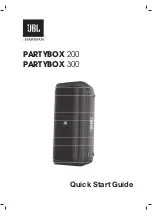
WA
15S
Operation Manual rev 1.0.0
10. Positioning
7
10. Positioning
When a bass loudspeaker is used in an environment with boundary surfaces, its placement affects its
frequency response. When such effects are properly understood, they can be applied to produce the desired
sound quality without the aid of additional amplification.
In the diagram below, figure (A) depicts a loudspeaker in free field or anechoic conditions. We measure its
sound pressure level at a fixed distance (D), and refer to this as our reference level, or 0 dB SPL.
If we now place a large reflective surface (such as a wall, ceiling or floor) next to the loudspeaker, as show in
figure (B), the sound radiated towards the boundary is reflected back into the room. As a result, the sound
pressure level can increase by as much as 3 dB, producing the same effect as doubling the available amplifier
power. Because the loudspeaker is radiating its power into half as much space, this is known as half space
loading. For each additional boundary, the SPL can increase by a further 3 dB. Corner placement, or eighth
space loading, can increase a bass speaker’s efficiency by up to 9 dB.
This effect is not the same at all frequencies, however. Essentially, loudspeakers are only omnidirectional at
low frequencies, where the wavelength is large in comparison to the loudspeaker. At higher frequencies sound
radiates in a more directional manner. We can position full range loudspeakers next to a boundary in order
to boost the lower frequencies while the highs remain unchanged. In addition, placing bass cabinets close
together results in coupling which also increases bass output.
(A) free-field
(B) half-space
(C) quarter-space
(D) eighth-space
0 dB
+3 dB
+6 dB
+9 dB
How SPL Increases Due To Boundary Effects






























